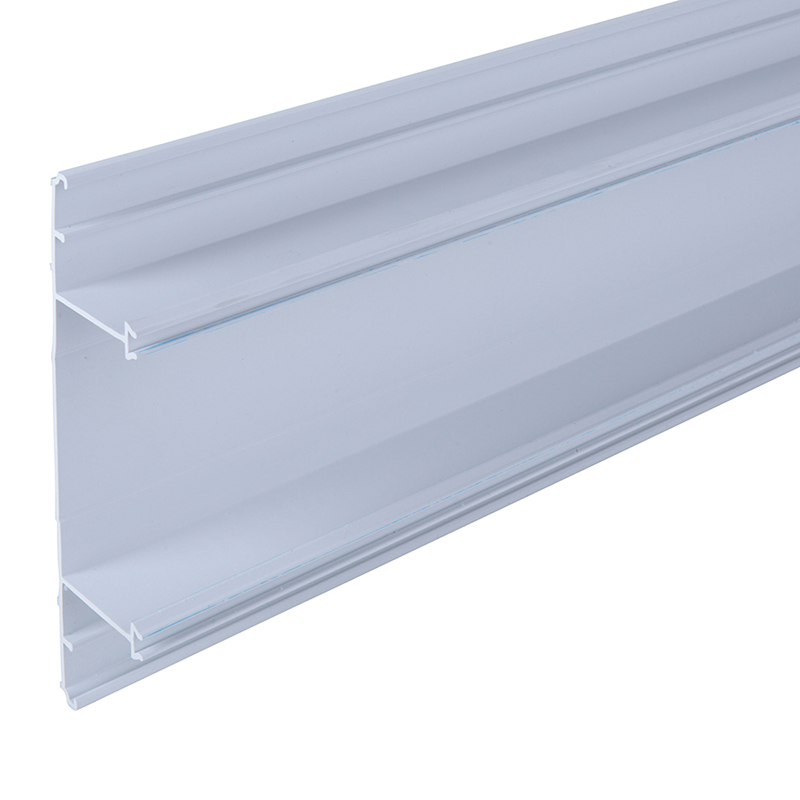Spacing Factors - A Brief Guide from Marshall Tufflex

Published: Friday, 11 August 2023
When fitting cables through different types of conduit and trunking systems, it is important to ensure that the trunking can comfortably house the number of cables required. This protects cables from unnecessary damage, aids installation, as well as hiding them from everyday view.
Failure to properly size and fit the appropriate number of cables correctly may lead to cables being crammed into the available space. This can lead to an increase in operational temperature, which can cause problems.
In this article, we will be looking at the space required to install your cable wiring. We’d like to thank Marshall Tufflex for providing you with this in-depth guide regarding cable management.
The Basics
When adequate space is not provided for the cables it can be likely that they snag, damaging sheathing and potentially exposing live conductors. To limit the risk of damage, the spacing factor needs to be calculated - this refers to the free air allowances made around the cables installed in a conduit or trunking system to ease drawing-in.
In the first instance it is important to identify which type of cable is being installed. When in use, power cables increase in temperature and require free space to act as a natural coolant. Closely packed power cables cannot dissipate heat as easily as cables clipped to, or lying on a solid surface, such as a cable ladder or cable tray, and are required to have a lower current then similar cables housed elsewhere.
Allowing for free space is a regulatory requirement and should be undertaken following the relevant wiring regulations. The electrical effects of grouping are also very important, and it must be noted that grouping factors still apply to cables enclosed in conduit and trunking systems. The Marshell Tufflex trunking is designed to provide you with that space to avoid the risk of your cables overheating (if that is what you require).
Data cables do not carry current and therefore do not pose the risk of any rise in temperature. It is not a regulatory requirement to allow for free space for this type of cable, however, it is still important to calculate spacing factors to prevent kinks and sharp angles in the cables from overcrowding, which can inhibit the effectiveness and flow of data.
The IET On-Site guide outlines cases that include straight runs of conduit not exceeding 3m, straight runs longer than 3m which incorporate bends or sets, as well as trunking. For sizes that are not given in the On-Site guide tables, as a general rule of thumb, the amount of cable contained within a conduit should not exceed 45%, with 55% air around it.

Calculating the space needed
Spacing factors should be calculated in accordance with the latest IET Wiring Regulations, BS 7671 and the use of the IET On-Site Guide. The IET On-site Guide provides a set of tables within the appendices to assist in the selection of the conduit and trunking and these illustrate the factors allocated to each cable size. An example table is below:
TABLE A
|
Type of Conductor |
Cable Cross-Sectional Area (mm²)) |
Cable Factor |
|
Solid |
1 |
22 |
|
1.5 |
27 |
|
|
2.5 |
39 |
|
|
Stranded |
1.5 |
31 |
|
2.5 |
43 |
|
|
4 |
58 |
|
|
6 |
88 |
TABLE B
|
Conduit Diameter (mm) |
Conduit Factor |
|
16 |
290 |
|
20 |
460 |
|
25 |
800 |
|
32 |
1400 |
|
38 |
1900 |
|
50 |
3500 |
|
63 |
5600 |
To obtain the cable concealment required, the diameter of cables needs to be aligned with the cable factor in Table A. The cable factor then needs to be multiplied by the number of cables in the space. This number then needs to be compared to the conduit factors which can identify which conduit diameter is needed for the job at hand.
For example, a cable that measures 4mm² would have a cable factor of 58. If there were 6 of these cables you would have a total cable factor of 348 (6x58 = 348). Referencing the cable factor against the conduit factor in Table B, the conduit diameter required for 6x 4mm² cables (i.e., that is greater than 348) would be 20mm.
Top Tips
• As the above tables show, cables are available as either solid or stranded. As such, confirm what cables have been selected and understand their specifications based on manufacturer’s instructions.
• When installing data cabling it is essential to install the cables in line with manufacturers recommendations. If not installed correctly, there is potential for the cable to not perform to its specified transfer of data speed.
• Factor in the tolerance in cable size and the tolerance in conduit and trunking.
• Always choose a high-quality cable management system, such as the ones produced by Marshall-Tufflex to ensure that your installation is long-lasting.
Refer to the IET On-Site Guide BS 7671 section on spacing factors for more guidance.
• Consult manufacturers fittings when using higher specification data cables to ensure that they provide sufficient bend radius and control to enable data cables to function avoiding kinks or snagging.
• Avoid overfilling trunking as lids may not fit correctly, be forced off the base, or cause distorted or out of shape trunking due to the pressure of the cables.
When installing cabling, it is important to ensure that the trunking can fit all the cables required to avoid unnecessary damage, aiding in the installation, and in hiding the cables from everyday view.
Marshall Tufflex has over 80 years cable management experience and provide the industry with new and effective solutions.
You can check out Marshall Tufflex range of cable management products here.

